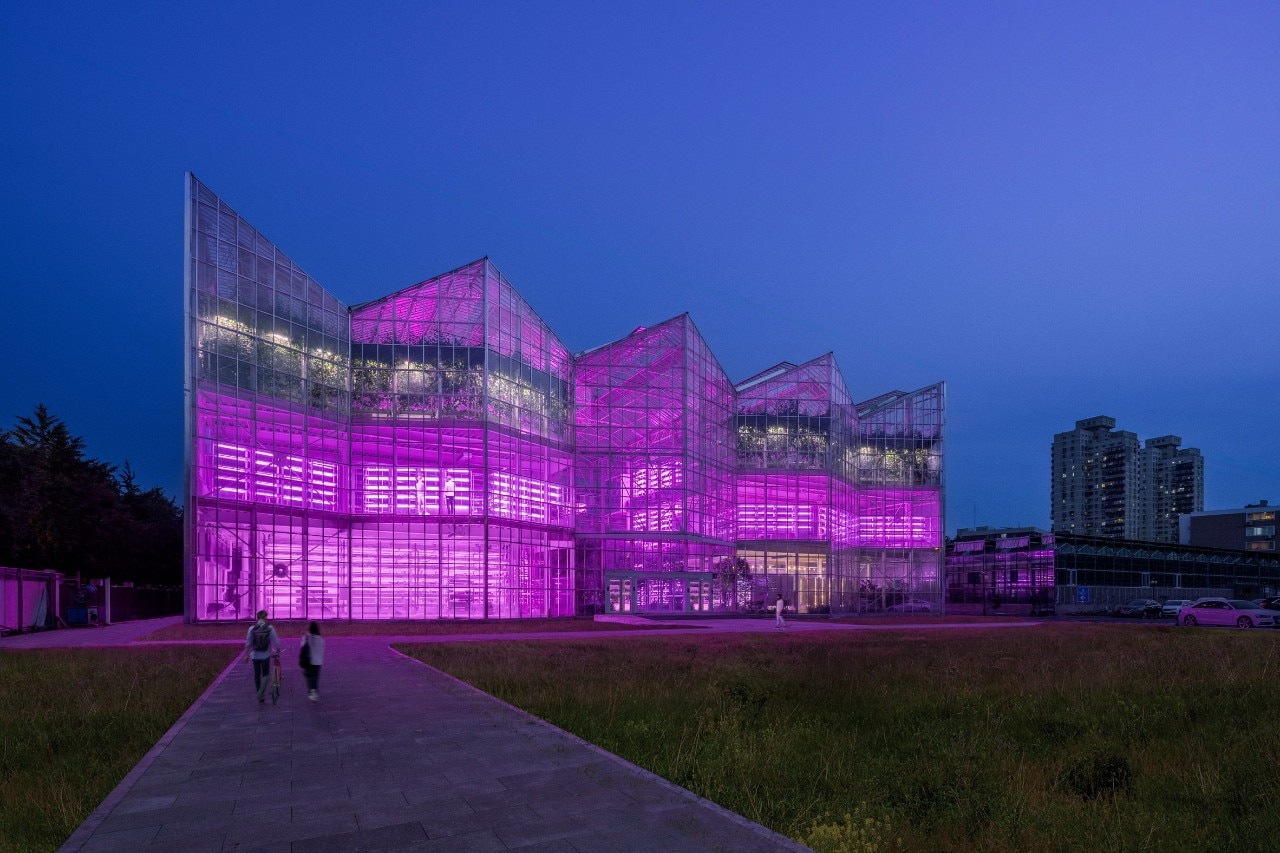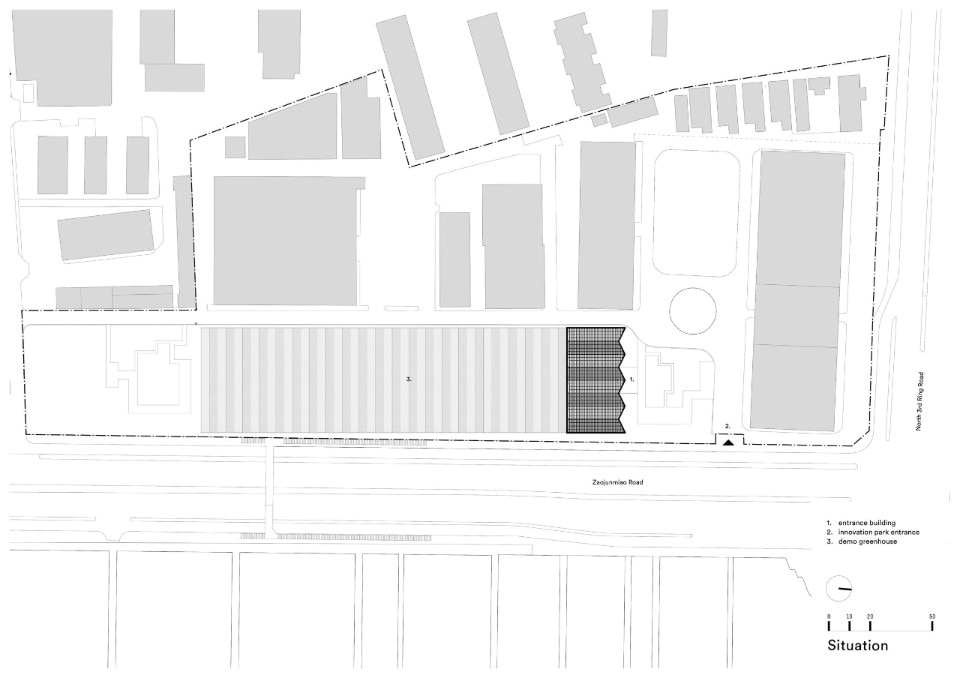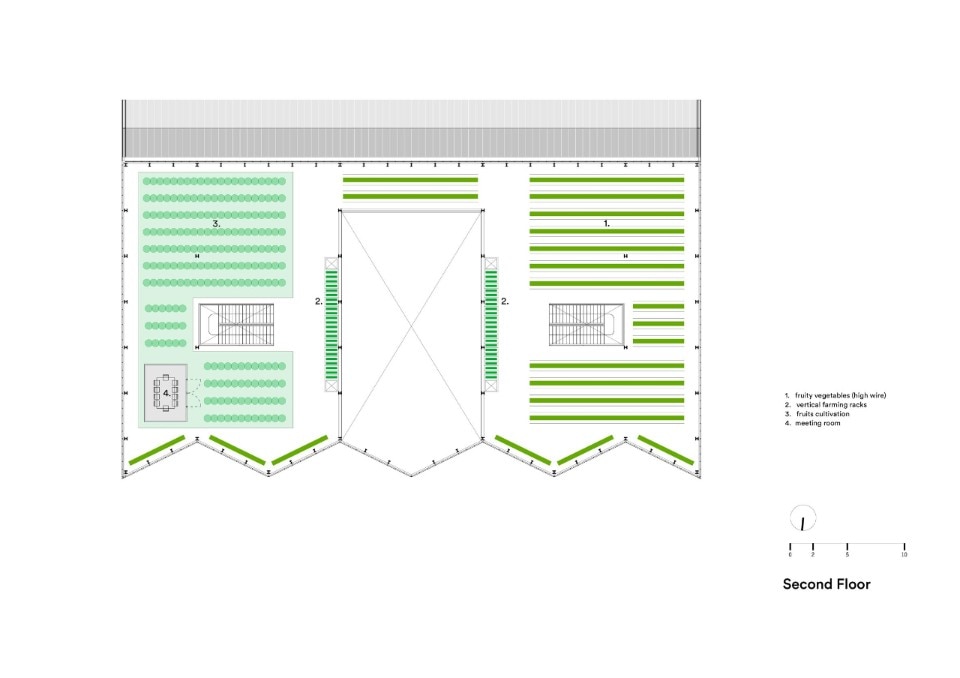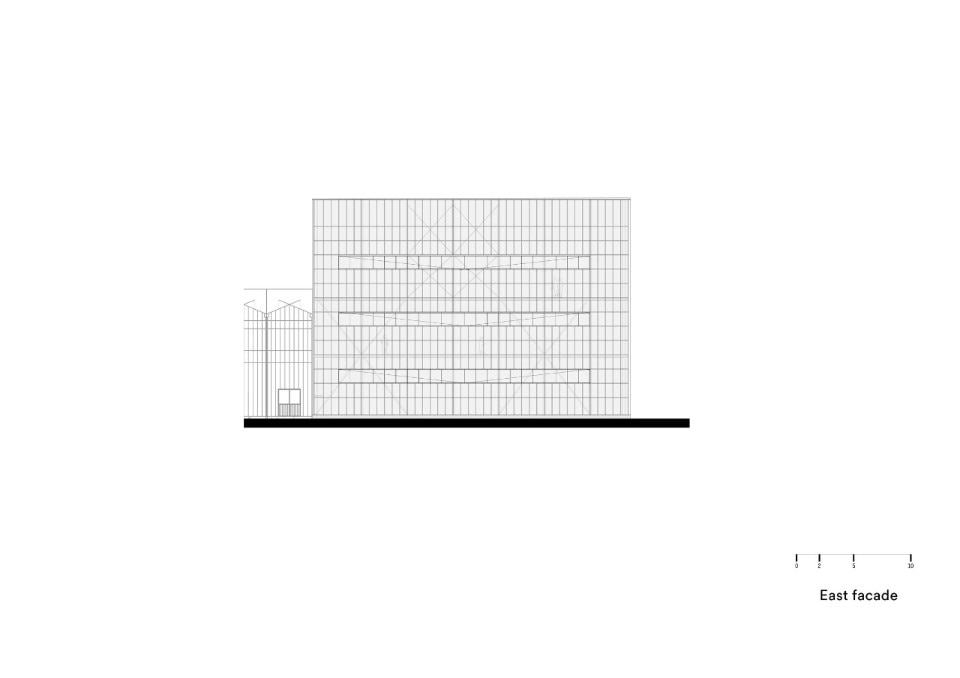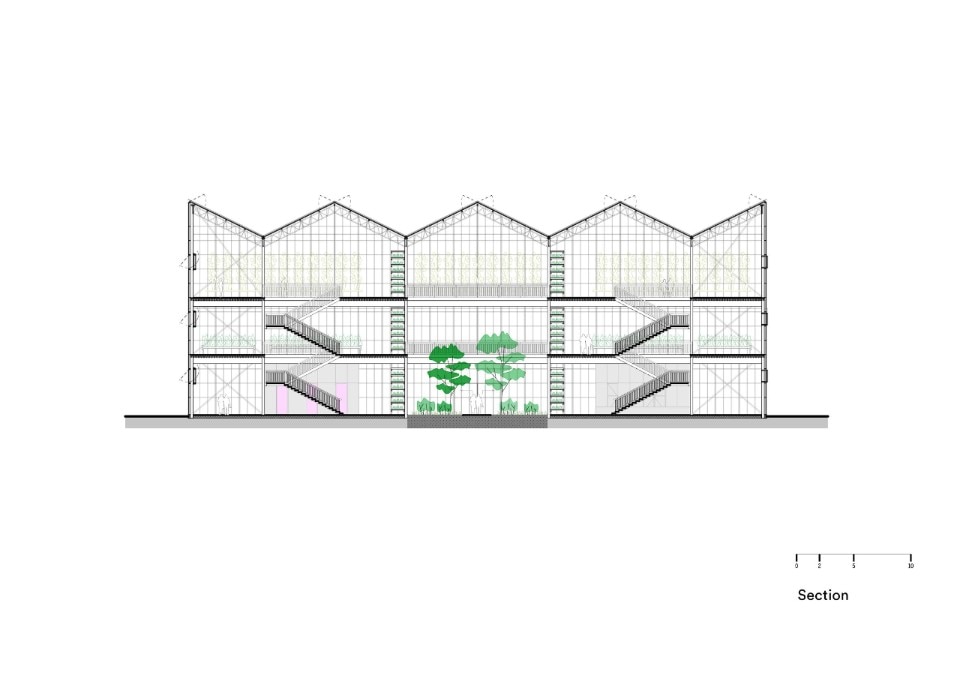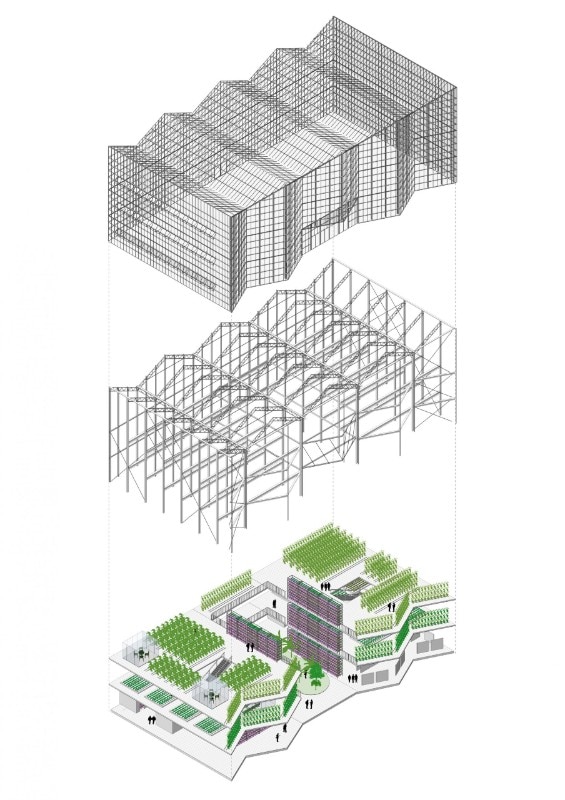Dutch studio Van Bergen Kolpa Architecten has completed Vertical Farm Beijing, an innovation centre for urban fruit and vegetable production built for the horticultural company AgriGarden and the Chinese Academy of Agricultural Science (CAAS).
The 3,500-square-metre greenhouse is located at the entrance to the CAAS campus in central Beijing, and Rotterdam-based Van Bergen Kolpa Architecten conceived it as a new ‘icon’ for the academy. The centre is designed to demonstrate to students and the general public how it is possible to grow food sustainably in an urban environment.
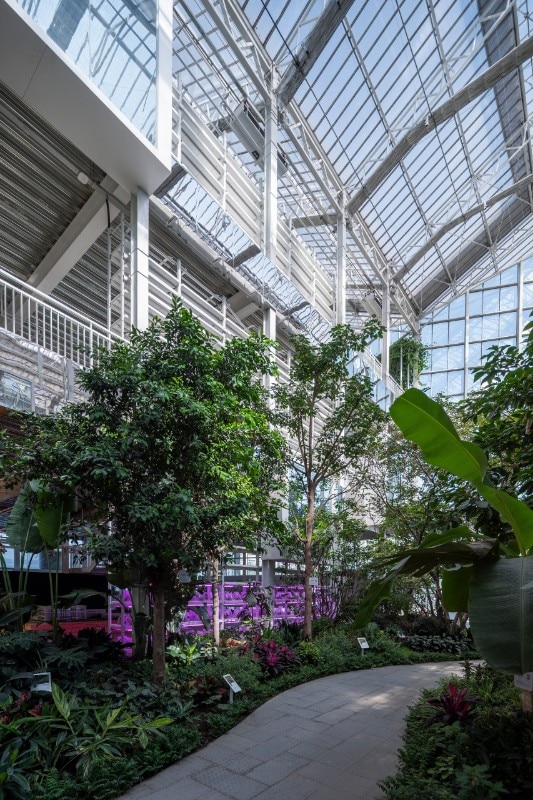
Spread over three floors, Vertical Farm Beijing is designed to showcase a range of different vertical cultivation methods and demonstration areas, linked by an educational pathway for visitors. On the first and second floors, fruit, berries and leafy vegetables are grown under purple LED lights, which give the building a special glow at night. Above, tomatoes and cucumbers are grown in natural light on the third floor, where the zig-zag steel-framed roof has integrated solar shading and ventilation.
“To provide millions of inhabitants of China’s large metropolises with green and healthy food, its production needs to be integrated into the city and its surroundings as much as possible,” explained the study. “Vertical Farm Beijing offers a solution in the form of stacked horticulture on a compact footprint: a new type of professional growing building accessible to a wide audience that celebrates the central role of food in the city.”
The greenhouse is organised around a full-height atrium that visitors enter, which has been adorned with large fruit trees and is overlooked by the vertical, shelf-like growing areas of the surrounding space. Water used to irrigate and water the plants is recycled and reused, while temperature control is achieved passively through evaporative cooling and sunlight.


